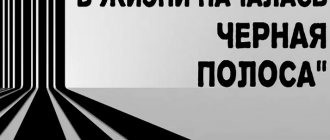Just recently he was so obedient, affectionate, sweet, but now he’s just a little typhoon, rushing its own way and not wanting to listen to your admonitions. On the street, he breaks out of your hands and runs into the deepest puddle, or, on the contrary, he constantly asks to be held in your arms and, from the height of his mother’s height, wants to look at those birds throughout the walk. At home, he certainly needs to open everything, take it apart, break it, turn it over and scatter it.
If the child agreed to be left alone, and even calmed down, you need to urgently run and save both him and the surrounding objects. And at night it’s no better: he wakes up every hour and demands his mother. And how difficult it became to feed him! He grabs spoons in both hands to tap them on the head, takes away a cup of milk to splash himself with it, throws half the food under the table (and if you don’t have time to collect it, he will certainly try to finish it there), shouts indignantly and points at the table and the refrigerator, demanding new dishes. At the same time, he doesn’t want to finish eating what you cooked for him for a long time and with love and stuffs his mouth with bread with all his might.
Sound familiar?
Meanwhile, nothing bad happens. This is the crisis of the first year. In the period from nine months to one and a half years, it happens to everyone. And the main thing you need to understand is that after any crisis there comes a period of calm and stable development. Until the next crisis.
Who promised that it would be easy? However, the crisis is not as terrible as it is made out to be if you have a clear idea of what and why is happening to your one-year-old child.
What is the 1st year crisis?
In psychology, the prerequisites for the emergence of a crisis in the first year of a child’s life are:
- frequent whims, the reasons for which are difficult to understand;
- mood swings.
The baby is growing, becoming more independent every day. Now he stands firmly on his feet and sees the world around him from a completely different perspective. The little one believes that he has become big, that he is no different from adults. However, he continues to be treated like a baby. This contradiction gives rise to a child’s one-year crisis.
The one-year-old toddler is driven in his actions by his own momentary desires. But adults dictate rules and prohibitions to him. For almost every “I want”, the child hears “I can’t” from mom and dad. He does not understand what the prohibitions are based on, why he needs to obey the rules. He has a burning thirst for knowledge of the surrounding reality, which contains sockets, mobile phones, and sharp household objects. But as soon as you reach out to an attractive object, a stern voice immediately rings out: “You can’t!” The child's interest is not satisfied, he gets angry and cries.
The psychological essence of the crisis in the first year of a child’s life is that the baby cannot combine into one whole the own desires and demands of adults, his need for independence and physiological dependence on the mother.
Successfully overcoming a crisis: psychological methods
The crisis of the first year of life is considered a positive phenomenon, since it is associated with significant changes in the child’s personality. Those around us are accustomed to noting only the negative manifestations of this process, but the positive ones are much more important. At the same time, clear boundaries of the crisis are not defined; they are individual in each case; In many ways, these boundaries depend on the behavior of others, on their ability to raise children and their willingness to understand them.
Soviet psychologists also warned parents against a large number of prohibitions. After all, they can have a detrimental effect on the development of the child and slow down the course of the crisis. Instead of constant restrictions and prohibitions, you should create some kind of environment that is safe for the child, which he can fully explore. You should also not be persistent and force your child to do something by force; instead, you should strive to interest him in what you consider necessary. It is important for parents to realize that now they are not intermediaries in the development of the world for the child, but only assistants. The initiative coming from the child should be generally encouraged, protecting only from dangerous situations in which the child could injure himself. Parents should show and tell him everything, so they can help him quickly understand what surrounds him.
With the right approach to education, the crisis period will end quite quickly - within a few months. It should be understood that the manifesting “whims” in the behavior of a one-year-old child are completely justified, since parents, with their comments, hinder the natural development of his personality. During a crisis period, it is not so much the child who must obey the parents, but the parents who must obey the child.
Signs
In the periodization of developmental psychology, the child’s 1st year crisis is the boundary between infancy and early childhood. Its signs are:
- desire for independence;
- a violent emotional reaction to an unsuccessful attempt to do something on your own;
- attempts to express your needs in words;
- stubbornness and persistence in getting what you want;
- the desire to develop one’s own opinion, different from the point of view of adults.
As a rule, the first outbreak of a crisis of one year is the most striking, because the baby experiences an emotional intrapersonal conflict for the first time, does not know how to behave in such a situation, and cannot imagine how the parents will react.
It is important to correctly recognize the signs of a 1-year-old crisis in a child. By mistakenly explaining a strong emotional reaction by the fact that the child is ill or that he has a bad character, parents block the contradictions of the child's soul. In the future, this may cause difficult adaptation to the society of peers.
Sources
- Wagner R., Meißner J., Grabski E., Sun Y., Vieths S., Hildt E. Regulatory concepts to guide and promote the accelerated but safe clinical development and licensing of COVID-19 vaccines in Europe. // Allergy - 2022 - Vol - NNULL - p.; PMID:33887070
- Al-Tammemi AB., Tarhini Z., Akour A. A swaying between successive pandemic waves and pandemic fatigue: Where does Jordan stand? // Ann Med Surg (Lond) - 2022 - Vol65 - NNULL - p.102298; PMID:33880181
- Koweyes J., Salloum T., Haidar S., Merhi G., Tokajian S. COVID-19 Pandemic in Lebanon: One Year Later, What Have We Learned? // mSystems - 2022 - Vol6 - N2 - p.; PMID:33879497
- Przednowek T., Stacey C., Baird K., Nolan R., Kellar J., Corser W.D. Implementation of a Rapid Post-Code Debrief Quality Improvement Project in a Community Emergency Department Setting. // Spartan Med Res J - 2022 - Vol6 - N1 - p.21376; PMID:33870002
- Desilets J., Lee CS., Fang W., Hinkle DM. Mortality risk associated with endophthalmitis in West Virginia. // Int Ophthalmol - 2022 - Vol - NNULL - p.; PMID:33861381
- Monte-Soldado A., López-Masramon B., Rivas-Nicolls D., Andrés-Collado A., Aguilera-Sáez J., Serracanta J., Barret JP. Changes in the epidemiologic profile of burn patients during the lockdown in Catalonia (Spain): A warning call to strengthen prevention strategies in our community. // Burns - 2022 - Vol - NNULL - p.; PMID:33858713
- Eubank JM., Burt KG., Orazem J. Examining the psychometric properties of a refined perceived stress scale during the COVID-19 pandemic. // J Prev Interv Community - 2022 - Vol - NNULL - p.1-14; PMID:33855930
- Ghosh AK., Mecklenburg M., Ibrahim S., Daniel P. Health Care Needs in the Aftermath of Hurricane Maria in Puerto Rico: A Perspective from Federal Medical Shelter Manatí. // Prehosp Disaster Med - 2022 - Vol36 - N3 - p.260-264; PMID:33853696
- Wang R., Zhong R., Liang H., Zhang T., Zhou X., Huo Z., Feng Y., Wang Q., Li J., Xiong S., Li F., Liang W., He J Thoracic surgery and COVID-19: changes and managements during the pandemic. // J Thorac Dis - 2022 - Vol13 - N3 - p.1507-1516; PMID:33841943
- Ogura Y., Gum JL., Steele P., Crawford CH., Djurasovic M., Owens RK., Laratta J., Brown M., Daniels C., Dimar JR., Glassman SD., Carreon LY. Drivers of in-hospital opioid consumption in patients undergoing lumbar fusion surgery. // J Spine Surg - 2022 - Vol7 - N1 - p.19-25; PMID:33834124
How does the 1st year crisis manifest itself?
It can be difficult to recognize crises in children, since the pace of physiological and psychological development in all children is individual. As a rule, manifestations of the crisis become noticeable 3–4 weeks after the baby develops the ability to walk independently. The 1st year crisis in a child manifests itself as a combination of the following neoplasms:
- surge in physical activity, restlessness;
- genuine interest in dangerous objects;
- the appearance of demanding intonations in the voice;
- the ability to experience resentment and disappointment;
- ability to express dissatisfaction;
- stubborn resistance to the rational actions of an adult;
- expansion of the stock of facial reactions (the baby can purse his lips tightly, frown his eyebrows, look from under his brows or squint);
- expanding the range of means by which the baby demands what he needs (loud screaming without tears, stamping his foot, sharp waves of his arms, falling to the floor);
- jealousy towards mother, importunity;
- refusal to comply with regulations.
Reasons for changes in behavior
Knowing the reasons that underlie the crisis of the first year of life helps to understand the essence of this phenomenon. These include:
- a large flow of information that the baby encounters every day, discovering the entire space of the apartment;
- daily acquaintance with a large number of new subjects;
- a leap in the development of mental functions;
- poor speech development, which does not allow you to clearly and clearly tell adults about your needs and desires;
- the first experience of independent and conscious spatial distance from parents;
- the need to train a large number of skills every day (washing yourself, dressing yourself, eating with a spoon, speaking);
- greater physical activity due to the development of independent walking skills;
- loss of psychophysiological connection with the mother and stress as a result of stopping breastfeeding.
A brief description of the causes of the 1-year-old crisis in a child shows that this is a natural phenomenon of developmental psychology, which cannot be avoided. The further social development of the baby at the early childhood stage will not be complete if the 1st year crisis is excluded from ontogenesis.
Periodization
In psychology, there are usually five childhood crises by age:
- 1 year - transition from infancy to early childhood;
- 3 years - transition to preschool age;
- 7 years - mastering school;
- 13 years - adolescence;
- 17 years old is the beginning of early adolescence.
However, this periodization is quite arbitrary. In the works of psychologists, textbooks, and various sources one can find other interpretations of it.
For example, there is an opinion that a separate newborn crisis should include the entire first year of a baby’s life, from birth to standing. In fact, every week there can be called a transition period, characterized by sharp jumps in physical condition.
According to another point of view, the crisis periods of 13 and 17 years should be combined into one - adolescence.
In some sources, the crisis of early adolescence is excluded from this periodization, since a seventeen-year-old person can hardly be called a child in the general sense of the word.
Such discrepancies in periodization should not be scary. Their descriptions are as similar as possible.
How does the baby feel?
According to developmental psychology, a one-year-old baby is in a state of stress due to a leap in mental development. Now he is aware of his own desires and wants to declare them to the whole world. He feels that he has become physically independent: he can let go of his mother’s hand and run away from her into another room. However, he does not like the fact that the mother will go to work, disappearing from the baby’s sight for a long time against his will. The psycho-emotional connection with the mother is very strong; if the mother leaves, the baby cries.
The experience accumulated by this time makes the one-year-old baby very susceptible to the phenomena of the surrounding world. He likes to be among people, he looks at their faces with interest. He is interested in everything, he wants to touch and taste everything, because he is not yet familiar with the dangers of this world.
The behavior of a one-year-old toddler is determined by an adult, but at the same time he has already formed such a psychological structure as character. Some of the adult’s prohibitions contradict his own beliefs, which is why a violent protest arises.
For a one-year-old baby, an adult is a source of positive emotions. At this age, children are able to accurately recognize the mood of adults. His parents play with him, feed him, and take him for walks. The child enjoys spending time with mom or dad. When people don't pay attention to him for a long time, he gets bored and wants communication. To attract the attention of an adult, the child begins to whine.
It is not at all difficult to understand how a child feels. To do this, you just need to recognize that he is an individual, he has his own preferences, desires and needs.
Allow or deny?
The baby begins to use tears and screams in order to achieve the desired result. In psychology, this is called manipulative crying. Of course, this unsettles the parents; they are ready to do anything to stop these heartbreaking screams.
However, manipulative crying is a necessary and natural stage in the development of a little person. In this way, he tests how strong the social framework is and what can be achieved by crying. The baby must have some prohibitions and limits on his desires. Permissiveness is difficult not only for parents, but also for the child himself. However, there must be clear logical grounds for any prohibitions. Prohibitions may concern things that pose a danger to life and health; they may be related to your work or something that is very dear to you.
If there are too many prohibitions, some of them are no longer observed. In this case, it is quite possible that the child will decide to violate exactly the prohibition that will be the most important for you. It is much easier to regulate a child’s behavior by simply removing prohibited things from his sight.
The famous English psychoanalyst Winnicott noted that if a mother left a bag of buckwheat on the floor and an eight-month-old child immediately scattered it, the mother, rather than the child, should be blamed for this. Winnicott advises that the drawers accessible to the baby should contain only those things that he is allowed to touch. You can even leave some “safe” drawers open. In this case, the child is unlikely to have a need to climb into the sideboard with your ceremonial service.
Duration of crisis in a one-year-old child
The name of this age crisis is very arbitrary. The time it appears in a child depends on the development of independent walking skills. How long a child’s 1-year crisis lasts and how it proceeds depends on the individual characteristics of the baby and the reactions of adults to negative behavioral surprises caused by the transition to a new stage of development.
According to Komarovsky, a child’s 1st year crisis lasts from 8 to 15 months. However, there are cases where a child managed to successfully overcome the crisis stage within a month. And for some it takes 10-12 months. The duration of the crisis is determined not only by the psychophysiology of the baby, but also by the parents’ competent response to behavioral outbursts.
The optimal time for overcoming age-related intrapersonal contradictions in a child is the period from 12 to 15 months. By this time, the physiological maturation of the brain and nervous system comes into balance with the psychological situation of development. The more a child understands, the easier it is for him to survive the crisis stage of ontogenesis.
If the crisis began before 12 months, parents need to understand that the child’s brain does not yet have a sufficient number of neural connections, so it will be difficult for the baby to cope with the emerging contradictions.
Parents note that after the successful completion of the crisis of one year, the baby takes a huge step forward in his development: he learns to jump, learns to subordinate his desires to rules, his vocabulary expands, and arbitrariness can be traced in his behavior.
general characteristics
All age-related childhood crises have specific features.
1 year:
- with learning to walk, the available space expands;
- Autonomous speech appears (they express emotions with sounds);
- behavior is determined by impressions, and not by dependence on objects;
- the first awareness of oneself occurs (they recognize themselves in the mirror).
3 years:
- relationships with adults change;
- there is a separation of oneself from others;
- opportunities are realized;
- the need for respect and recognition arises.
7 years:
- you have to learn new rules of school life;
- The operational and technical sphere is developing at an accelerated pace;
- sociocultural experience is acquired;
- educational activities become important;
- self-regulation develops.
Teenage years:
- communication with peers comes to the fore;
- self-awareness develops - an internal sense of oneself as an individual;
- life plans are drawn up that will allow you to live independently in the future;
- self-determination appears - awareness of one’s place in human society;
- reflection, formal-logical intelligence and hypothetico-deductive thinking are formed.
It must be borne in mind that even among psychologists, periodization is quite arbitrary. You cannot take this age too literally: a crisis of 3 years does not mean at all that it will begin on your birthday and will last exactly 12 months. This criterion is quite individual. For some, the jump occurs earlier, for others later. And they can also last differently: for some, everything ends after 3 months, while others have to endure for six months or longer.
Dangerous moments of a child’s independence at 1 year old
Children's interest in everyday objects can lead to injury. It is impossible to remove all dangerous objects from the baby’s field of vision. It is important to understand that the danger for a child lies not in the object itself, but in the fact that the child takes this thing without the control of an adult.
A child will develop a complete picture of the world only when he gets acquainted with all its objects and phenomena, including dangerous ones. But this should only be done together with an adult and under his supervision.
Only by bringing the child's hand closer to the fire so that he feels its temperature will he be able to explain to the child the danger of fire. Only by carefully touching the sharp blade of a knife will the child understand that this tool can get hurt.
With this approach, the child understands on a subconscious level that he needs to be careful. Through tactile sensations, a signal of danger is transmitted to the brain.
How to easily survive a crisis
In order for the crisis to pass quickly and painlessly, parents need to prepare for this important period. Psychologists advise adhering to the following algorithm of actions:
- Recognize that the child is an individual. His demands for expanded rights are natural. All parental prohibitions must be justified. If a child wants to try to do something on his own, he needs to be given this opportunity, but under the supervision of an adult.
- It is important to formulate prohibitions correctly. The use of the particle “not” in the ban should be abandoned. Instead of the word “impossible” it is better to use the word “dangerous”. At the same time, there should not be many prohibitions. Before prohibiting a child from doing anything, parents need to discuss it among themselves in order to develop a common view on upbringing in the family.
- Create safe living conditions. If the baby is allowed to participate in household activities with his mother, he will be delighted.
- Create conditions for the comprehensive development of the child.
- During games, the child should be allowed to break buildings made of cubes and disassemble the mosaic. After the child has destroyed the built tower, you need to build it again. This develops logical thinking.
- Talk to your child. If the baby is outraged by something, you need to let him speak out and be sure to try to understand his feelings. Hearing the mother’s calm speech, the baby calms down. Mom can accompany her statements with kisses and strokes. Such communication forms a trusting relationship between the child and parents.
- Compliance with routine moments is important for the baby’s health. You should not refuse them just because the child protests. They can be preserved if we use play rather than strict coercion.
Prohibited actions
In addition to developing a uniform line of behavior for all loved ones, parents should not go to extremes. You can’t completely prohibit everything and control every step of the baby. This will lead to infantilism of the baby. Categorical prohibitions threaten normal development because they interfere with learning about the world.
However, permissiveness and indulgence in whims are harmful. This will spoil the baby; he will not be able to adequately perceive the rules of behavior in society.
Psychologists advise not to use the following measures:
- Screaming, hitting the child. Children do not yet understand cause and effect relationships. Your punishment will have no effect, but will only harm the baby.
- Change decisions. If it's banned, it means it's banned. Try to set the rules once and for all. If the mother allowed it today and said no tomorrow, this will lead to disorientation of the child. He will not be able to learn the norms of behavior.
- Don't try to buy good behavior with toys or sweets. So you just tell your child the method of manipulation.
It is important for adults to communicate correctly with each other. Children, like a sponge, absorb everything that surrounds them. Even if the child cannot repeat your words yet, your actions are stored in his memory as a variant of the norm.
The position of I am a parent is very dangerous, I know better. Don’t push with authority, don’t try to “break” the baby. Try to build friendly relationships with your child, gently setting boundaries. He must understand that it is forbidden to hit or bite his mother, but there is also a taboo on physical punishment for his mother.
The child does not let his mother go anywhere - what to do?
Many mothers in the crisis of 1 year or in crises in children after a year are faced with the following problem: there is no time to do household chores, since the child does not let him go anywhere and does not get out of his hands. What to do in such a situation?
First of all, it is necessary to determine the reason why the child is afraid of his mother disappearing from sight. It can be:
- A very strong psychological dependence of the child on the mother. When the mother is nearby, the child feels safe. If she leaves, he becomes worried. In addition, children very sensitively feel the emotional mood of their mother. If a woman is worried, worried, leaving the baby, he will copy her condition.
- Fear of loneliness. When the mother leaves, the child does not know the exact time of her return. He fears that she will not return. This happens if parents use threats as the main means of behavior correction: “If you behave like this, I’ll leave you!” When mom leaves on business, the baby believes that the moment has come when, because of his bad behavior, mom left.
- Attention deficit. If the mother is next to the child, but is busy with her own affairs, he lacks communication. Seeing that his mother is getting ready somewhere, the child gets upset: he was waiting for his mother to turn her attention to him, but she leaves.
You can teach your baby to calmly accept his mother’s absence if you play hide and seek with him more often. Frequent visits from close relatives and family friends help him develop a calm attitude towards the fact that his mother may not always be with him. There is nothing wrong with the fact that sometimes another person is nearby, no.
The mother’s phrase: “I’ll go to the store, I’ll be back soon” helps reduce the baby’s situational anxiety. Such phrases build the child’s trust in the mother: the mother said that she would be back soon, and she actually came in a few minutes. It's better than sneaking out. If a child was busy playing and then discovered that his mother had disappeared, he sobs out loud. When the mother returns, the baby does not leave her one step, fearing that she will disappear again.
Advice from Dr. Komarovsky
Dr. Komarovsky calls the 1-year crisis in a child a capricious time. In the works of this author you can find tips on overcoming the crisis of 1 year:
- Before doing housework after returning home, the mother is recommended to spend half an hour with the child: play with him, talk, sit him on her lap. Then you can go to the kitchen together. While mom is busy preparing dinner, the child will happily sit next to her, watching her actions or playing with pots.
- Bright pictures or candy wrappers can help the child come to terms with the fact that mom needs to be alone in the bathroom for a while. Taking several of these pictures with her, a mother can captivate an anxious baby with an interesting game: the baby is looking forward to the next bright picture appearing from under the door. If you don’t have pictures at hand, you can sing songs. Hearing the mother's voice, the baby will not worry about the fact that she has disappeared.
- It will be easier for a child to come to terms with prohibitions if parents offer alternative permitted actions. For example: “The book cannot be torn. You can leaf through it and look at pictures”, “When a cat is pulled by the tail, it hurts. You can only pet the cat.”
- Toys will help stimulate compliance with routine moments. If your child doesn't want to brush his teeth, you can ask a teddy bear to show him how he brushes his teeth. If a girl is capricious before going to bed, you can draw her attention to the fact that the Katya doll is already sleeping, because she is obedient.
- An effective way to stop an outburst of negative emotions is to switch the baby’s attention to something else.
How to behave: advice from psychologists
There are parents who intuitively feel the crisis of 1 year and try to help their child overcome it. This is better than blaming everything on teething or a bad temperament. However, mistakes along this path cannot be avoided, because in some moments only developmental psychology will help to correctly understand the needs of the baby.
The correct behavior for parents in this situation is to know in advance about the upcoming crisis and prepare for it as much as possible. This means that you need to study the relevant material on the topic (reasons, signs and what to do). With the development of the Internet, child psychology has become accessible to everyone. If you have any questions or problems, you should seek help from a specialized specialist.
So, what do child psychologists advise parents to do when a child enters the phase of the first age crisis in his life?
- Do not rush headlong to see a psychologist or psychotherapist. The 1-year crisis is considered one of the mildest and does not require special correction, much less treatment.
- Accept the child as an independent person and expand the range of his rights (you can give him the opportunity to choose his own toys).
- Continue to follow the previously established daily routine, despite the whims, but do this through play and not through violent methods.
- Develop a child: expand his boundaries (buy a walker), provide food for the intellect (with the help of games), train hand motor skills.
- Provide him with household safety, taking into account his increased curiosity (do not prohibit him from poking his fingers into the socket, but put a lock on it).
- Teach independence: let him wash himself, eat, dress himself - slowly and incorrectly, but he will be satisfied with his own importance and will quickly learn to do all this.
- Do not deprive him of feedback: if he speaks to you in his own language, try to understand what he wants to convey to you, and be sure to respond to any babble with words, gestures and facial expressions.
- Get used to the words “should” and “don’t”. Moreover, all prohibitions must be strict, unshakable and observed by all family members.
- Show your love: talk kindly, hug, kiss, look into the eyes.
10 “don’ts”: a reminder for parents
And psychologists offer one more small reminder to parents. From 8 to 15 months it is strictly forbidden to:
- Raise your voice: all prohibitions should be explained calmly, using games.
- Follow the child’s lead and indulge his whims: taboos should not be broken under any circumstances.
- Make him the center of the universe.
- Deprive him of independence: decide what he can do on his own at this age.
- Ignore his actions and words: close contact and direct communication are mandatory.
- Panic: patience and calmness of parents is the key to the normal mental development of a child at any age.
- Disturb the daily routine.
- Weaning: you need to do this either earlier or later.
- Mom should not go to work: the same as the previous “no” option.
- Place your child in kindergarten or hire a nanny for him.
Conclusion fifth. The main rule for parents during this period is to accept the child as an independent person and help him overcome contradictions and survive the crisis without hysterics and nervous breakdowns. This will require coordinated work of all household members and a lot of patience, but believe me: it’s worth it.
My recommendations
New developments of the psyche on the threshold of new stages of ontogenesis are associated with crises. This is fine. Parents need to be patient: it will take a little time and everything will get better.
You should not scold your child for negative behavioral reactions during a crisis. Psychological practice shows that this is ineffective. An alternative to this is confidential communication, explaining to the child the essence of emotional states. The baby calms down when he sees that his mother understands his feelings and shares them.
Those children whose parents encourage their independence overcome crises more easily. Starting with independence in dressing and washing, parents gradually develop in the child self-confidence, initiative and a love of order.
If the parents’ views on upbringing coincide, and the spouses are calm about the crisis, then its course will be painless for the family.
Features of development
The child is actively learning new skills - walking, speaking, which require certain physical and mental effort.
The speech of a one-year-old baby is autonomous; a unique child's language is understood only by a circle of close people. Words have several meanings that vary depending on the context.
The basis of cognitive and emotional development is communication with adults. The child wants his conflicting needs to be taken into account and respected.
The behavior of a child who has entered early childhood is impulsive. A new object that attracts his attention has a certain emotional connotation and can cause violent positive or negative reactions.











